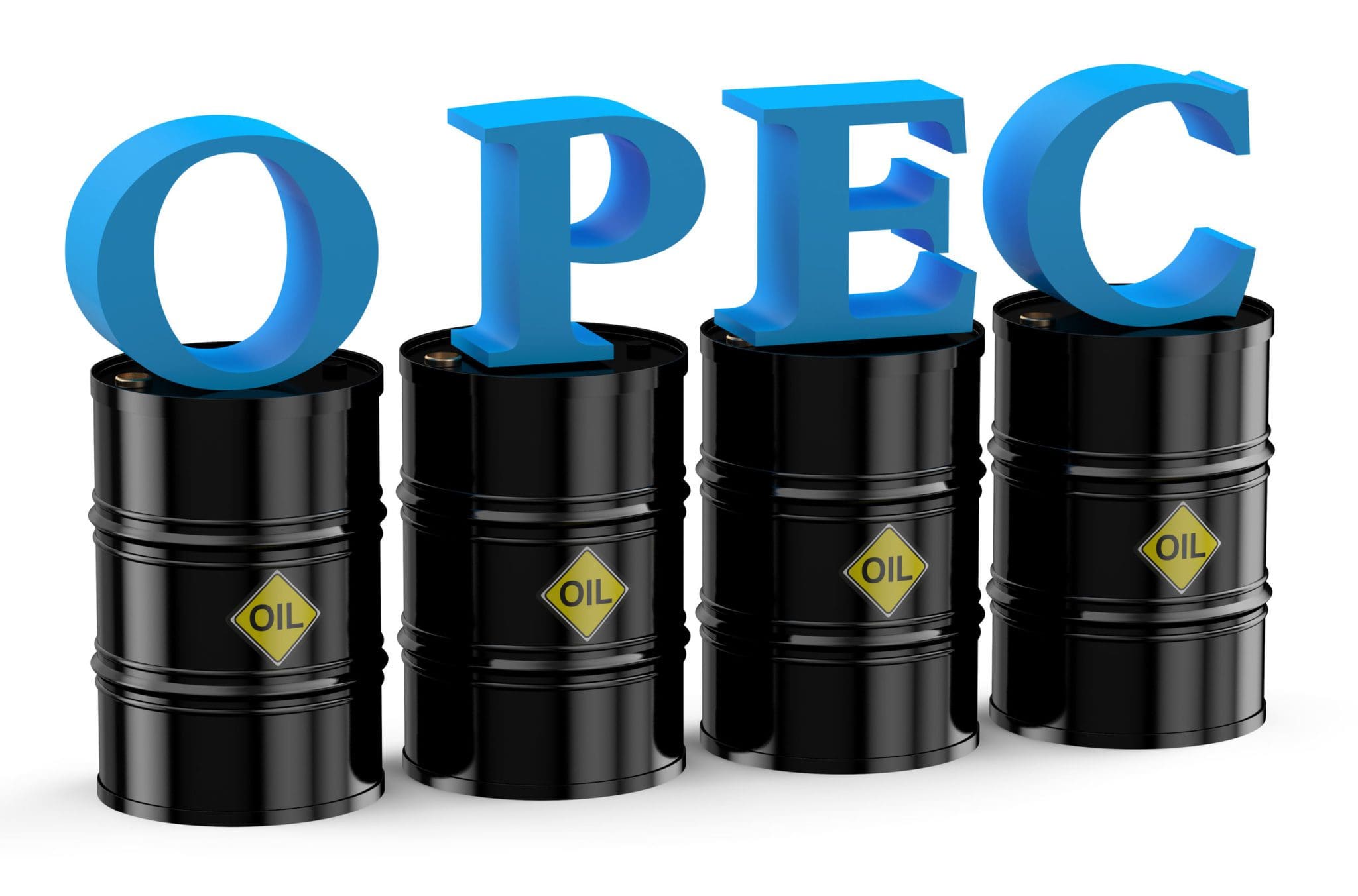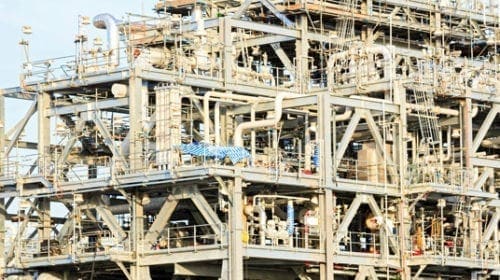With the member countries of the Organization of the Petroleum Exporting Countries (OPEC) controlling around 40 percent of the world’s crude oil production and exporting about 60 percent of the petroleum traded internationally, the activities of OPEC have been an important factor affecting not just oil prices but oil production in non-OPEC countries as well. Given that OPEC did not set a production target at its June meeting, the global industry is left wondering what OPEC’s relevance will be moving forward, while the U.S. works to understand its role in the global picture and secure its energy future.
2015 Results
The U.S. Energy Information Administration (EIA) has estimated that, for 2015, OPEC members earned about $404 billion in net oil export revenues, which represents a 46% decline from the $753 billion earned in 2014. That decline, EIA said, is mainly due to a fall in average annual crude oil prices during the year, and to a lesser extent, decreases in the level of OPEC net oil exports. The 2015 revenue total was the lowest earnings for OPEC since 2004. Saudi Arabia — OPEC’s largest producer — earned the largest share of the total 2015 revenue at $130 billion, which represents about one-third of OPEC’s total.
EIA has projected that OPEC net oil export revenues could fall further to about $341 billion dollars this year. OPEC net oil export earnings are expected to decline by about 17% from $606 in 2015 to $503 in 2016. The expected decline in OPEC’s net export earnings is attributed to lower forecast annual crude oil prices in 2016 compared with 2015. The price declines are expected to more than offset OPEC’s increased production and exports in 2016.
EIA also expects OPEC’s crude oil production will average 32.4 million barrels per day (b/d) in 2016, 0.8 million b/d higher than in 2015. For 2017, OPEC revenues are projected to be $427 billion, with an increase in forecast crude oil prices, coupled with higher OPEC production and exports, contributing to the rise in overall earnings.
OPEC View
At OPEC’s June meeting, Qatar’s Minister of Energy and Industry and President of the OPEC Conference Mahammed bin Saleh Al-Sada said during his opening remarks that it appears that global oil supply and demand will come into balance in the second half of this year, “with demand for OPEC crude averaging around 32.5 million barrels per day.” He added that the overall demand increase year-on-year for OPEC crude is around 1.8 million barrels per day.
In a statement at the conclusion of the meeting, OPEC called global demand growth “healthy,” considering recent economic challenges and developments. OPEC noted that non-OPEC supply peaked during 2015 and started declining, with supply expected to further decline by 740,000 b/d in 2016. In addition, OPEC said that crude oil alone is lower by more than 1 million b/d from its peak at the beginning of 2015, and global demand is expected to expand by 1.2 mb/d after growing at 1.5 mb/d during 2015.
Ultimately, OPEC did not agree on a production target for members, saying it would “continue to closely monitor developments in the coming months, and if necessary, recommend member countries meet again and suggest further measures according to prevailing market conditions.”
Market Forces
OPEC’s failure to set a production target in June was not a surprise to analysts.
“It’s what we expected, because fundamentally, Saudi Arabia and Iran have different strategies, and they won’t agree with each other,” IHS Director, Oil Markets and Downstream, Spencer Welch told Oilman. “While they won’t agree with each other, it’s virtually impossible for OPEC to agree on anything.”
In the meantime, Welch said, the price of oil is being set by market forces of supply and demand. An oversupply of oil on the market has pushed prices down for about a year and a half.
“Prices dropped down to below $30 per barrel in January, and since then the price has been recovering because the market has been coming back into supply and demand balance,” he said.
According to Welch, those market forces are going to be driving U.S. oil production for now.
“The market forces have been doing what they are expected to do,” he said. “Supply has been dropping, which is mostly U.S. production, and because of that low price, it has been less economic [for U.S. producers], so there has been less drilling taking place, and as existing production has declined it’s not being replaced. Now, the market is coming back into supply and demand balance and the price has been recovering.”
In the spring, the price of oil was up in the $40 per barrel range, briefly hitting $50.
OPEC’s Future
Whether or not OPEC makes a move to alter its production targets in the future is open to interpretation.
“Iran is trying to recover its oil production, in fact oil exports, to the level they were at before the nuclear sanctions were put into place,” Welch said. “It’s getting close, but it’s not there yet. So until Iran has effectively recovered the market share that it had previously, it won’t be taking part of any agreement, and OPEC effectively won’t be agreeing on anything.”
But even if Iran recovers its production, Welch says it’s still not likely that OPEC will make a move.
“OPEC can see that the price is recovering — the market forces have done what they are expected to do,” he said. “But some of the higher cost producers have stopped producing and the price is heading back up; not past the $100 per barrel figure, but it’s going back up. So I still think that once Iran is back that it is unlikely that OPEC would do anything because I think they’ll be happy with the existing oil market situation.”
There is a chance, Welch added, that OPEC may want to push the price up further and faster by restricting supply, but even then, it would be hard to do “because they historically have great difficulty in a coordinated response in setting targets.”
Greg Sharenow, an executive vice president with Pimco, noted in a June 8 Viewpoints video blog that, despite the fact that OPEC did not change their production guidance in June, OPEC is still very relevant. He said that OPEC controls access to the cheapest reserves in the world and that investment policy has significant implications for oil balances.
He also said that OPEC may also seem more relevant in the future if we see transient imbalances in supply and demand. If, for example, there is a war, a hurricane or an economic recession, it would be in OPEC’s interest to adjust their production to create what Sharenow calls a bridge over that instability.
US Action
In the U.S., the importance of establishing energy security to ensure that the actions of OPEC do not harm U.S. industries or the economy remains a critical conversation.
FedEx Chairman, President and CEO Frederick W. Smith and 34th U.S. Marine Corps Commandant James Conway (Ret.) recently released a report that outlines a range of solutions to the challenges created by recurring extreme oil price volatility, exacerbated by the conduct of foreign governments.
The report highlights the strategic value of U.S. oil and gas resources and advocates for the responsible and safe production of oil on currently closed-off federal lands, including in the Arctic and portions of the Outer Continental Shelf.
“[T]aking advantage of our own abundant resources will allow us to better prepare ourselves for oil price shocks and supply disruptions in unstable oil producing regions, like the Middle East or Venezuela,” Conway said in a statement.
The report recommended establishing a commission of experts to investigate anticompetitive actions by OPEC, its member states, and other national oil companies, assess their impact on the U.S. economy, and put forth policy recommendations. In addition, the report recommended building an international consensus among oil-consuming nations on the importance of shared responsibility and coordinated action to deal with future oil supply interruptions.
Oil and gas operations are commonly found in remote locations far from company headquarters. Now, it's possible to monitor pump operations, collate and analyze seismic data, and track employees around the world from almost anywhere. Whether employees are in the office or in the field, the internet and related applications enable a greater multidirectional flow of information – and control – than ever before.













